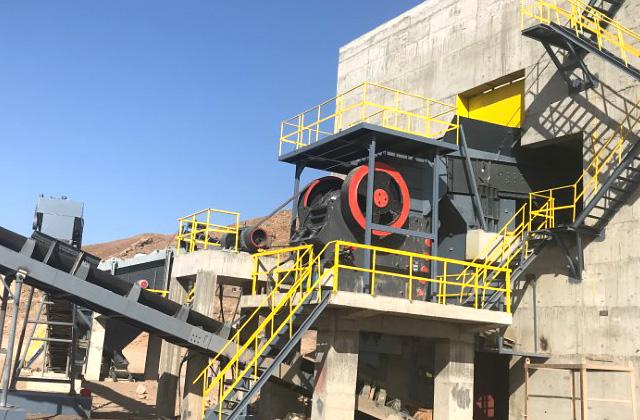A primary crusher and screening plant play integral roles in the mining industry, particularly in the initial stages of ore processing. Let’s delve into their significance, functions, and operational aspects.

Primary Crusher:
The primary crusher is a crucial component in the ore processing circuit, tasked with reducing the size of the mined ore into smaller, more manageable pieces. Its primary function is to break down large chunks of raw material into smaller fragments that can be handled more easily by downstream equipment. Here are some key aspects:
- Crushing Mechanism: Primary crushers employ various mechanisms to achieve ore reduction. Common types include jaw crushers, gyratory crushers, and impact crushers. Jaw crushers utilize a fixed jaw and a moving jaw to crush the ore by applying pressure. Gyratory crushers have a conical head and a concave surface, providing a larger crushing surface area. Impact crushers use the principle of impact to break the ore into smaller pieces.
- Capacity and Throughput: The primary crusher’s capacity is crucial for maintaining an efficient ore processing operation. It must be capable of handling the expected throughput of ore from the mine. Factors such as ore hardness, feed size, and crusher design influence the capacity and efficiency of the crushing process.
- Size Reduction Ratio: The size reduction ratio of the primary crusher determines the final product size and influences the efficiency of subsequent processing stages. A higher reduction ratio results in finer crushed ore, which may improve downstream processes such as grinding and mineral liberation.
- Maintenance and Safety: Regular maintenance is essential to ensure the reliable operation of the primary crusher. This includes routine inspections, lubrication, and component replacements as needed. Safety protocols must also be strictly followed to prevent accidents and ensure the well-being of operators.
Screening Plant:
After the ore is crushed by the primary crusher, it often contains a mix of different-sized particles. A screening plant is employed to separate the crushed material into various size fractions, ensuring uniformity and facilitating further processing. Here are some key aspects of screening plants:
- Screening Process: Screening plants utilize screens or sieves with perforated surfaces to classify the crushed ore into different size fractions. The ore is fed onto the screen, and particles smaller than the screen openings pass through, while larger particles are retained for further processing.
- Screen Types: Screening plants may employ various types of screens depending on the application and desired outcome. Common types include vibrating screens, trommel screens, and inclined screens. Vibrating screens use vibrating mechanisms to separate the material, while trommel screens employ a rotating drum with perforated plates. Inclined screens use gravity to facilitate the screening process.
- Deck Configurations: Screening plants can have multiple decks or layers of screens to classify the ore into multiple size fractions simultaneously. Each deck may have different screen openings to achieve the desired particle size distribution.
- Efficiency and Capacity: The efficiency and capacity of a screening plant depend on factors such as screen size, inclination, vibration amplitude, and material properties. Proper selection of screens and operational parameters is crucial to achieving optimal performance.
- Maintenance and Upkeep: Like the primary crusher, screening plants require regular maintenance to ensure smooth operation. This includes cleaning, inspection of screen surfaces, lubrication of moving parts, and replacement of worn components. Regular maintenance helps prevent downtime and ensures the longevity of the equipment.
In conclusion, a primary crusher and screening plant are indispensable components of the ore processing circuit in the mining industry. They work in tandem to reduce the size of mined ore and classify it into various size fractions for further processing. Proper selection, operation, and maintenance of these components are essential for the efficient and reliable operation of the entire ore processing operation.
